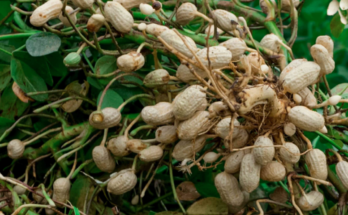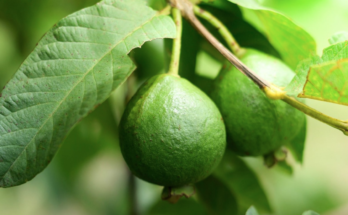Gardening has been my passion for years, and I’ve learned a lot about the best methods of fruit planting. Choosing Which is the best method of fruit planting is in early spring or fall, when the weather is cooler, allowing roots to establish effectively can make a big difference in your garden’s success.
I’ve tried various techniques, and some have stood out. It’s important to consider your soil type, climate, and the specific fruit you want to grow.
I find that certain methods work better for certain fruits. Whether it’s direct seeding, grafting, or using cuttings, each method has its pros and cons.
I’ll share my insights to help you pick the right method for your garden. Gardening is all about trial and error, but with the right approach, you can achieve great results.
Which Is The Best Method Of Fruit Planting?
The best method of fruit planting depends on the type of fruit and your specific garden conditions. Grafting is highly effective for most fruit trees.
It ensures strong growth and good fruit quality. Direct seeding works well for fruits like melons and pumpkins. It’s simple and cost-effective. Using cuttings is great for fruits like grapes and figs. It’s a quick way to propagate plants.

I always consider the soil, climate, and the fruit itself before choosing a method. Each method has its strengths, so pick the one that suits your needs best.
Fruit Planting Methods
Fruit planting involves various techniques, each with its own set of benefits and challenges. The most common methods include seed planting, grafting, budding, layering, and cuttings.
Understanding these methods is crucial for making an informed decision.
Seed Planting
Explanation of the Method:
Seed planting involves sowing the seeds of the fruit directly into the soil.
Advantages:
- Cost-effective: Seeds are generally inexpensive and easily accessible.
- Easy to Start: Requires minimal initial effort and resources.
Disadvantages:
- Longer Time to Mature: Trees grown from seeds can take several years to bear fruit.
- Genetic Variability: Seeds may not produce plants identical to the parent plant, leading to unpredictable fruit quality.
Grafting
Explanation of the Method:
Grafting involves joining a scion (a young shoot or twig) from one plant to the rootstock of another.

Advantages:
- Faster Fruit Production: Grafted plants usually bear fruit sooner than seed-grown plants.
- Disease Resistance: Grafted plants can inherit disease-resistant traits from the rootstock.

Disadvantages:
- Requires Skill: Grafting is a technical process that requires expertise.
- More Expensive: The cost of grafted plants is generally higher.
Budding
Explanation of the Method:
Budding involves inserting a bud from one plant into the stem of another.

Advantages:
- High Success Rate: Budding often has a higher success rate compared to other methods.
- Multiple Varieties: Allows for multiple varieties of fruit on a single tree.
Disadvantages:
- Requires Skill and Precision: Budding needs careful handling and precision.
- Seasonal Limitations: Best performed during specific seasons.
Layering
Explanation of the Method:
Layering involves bending a branch to the ground and covering it with soil to encourage it to develop roots.
Advantages:
- High Success Rate: Layering often results in successful new plants.
- Strong Root Systems: Produces plants with robust root systems.

Disadvantages:
- Time-Consuming: Layering can take a long time to produce a new plant.
- Limited to Certain Types of Fruit Plants: Not all fruit plants can be propagated this way.
Cuttings
Explanation of the Method:
Cuttings involve taking a piece of a plant and encouraging it to grow roots.
Advantages:
- Quick and Simple: Easy to perform and doesn’t take much time.
- Genetic Consistency: Produces plants identical to the parent plant.

Disadvantages:
- Lower Success Rate: Not all cuttings successfully develop into mature plants.
- Vulnerability to Diseases: Cuttings can be more susceptible to diseases.
Comparative Analysis
When choosing a fruit planting method, consider the following factors:
- Time to Maturity: Grafting and budding are quicker methods compared to seed planting.
- Cost: Seed planting is the most cost-effective while grafting and budding can be more expensive.
- Skill Required: Seed planting and cuttings are simpler, whereas grafting and budding require more expertise.
- Success Rate: Budding and layering generally have higher success rates.
- Genetic Consistency: Cuttings and grafting ensure genetic consistency, unlike seed planting.
- Disease Resistance: Grafted plants can inherit disease-resistant traits from the rootstock.
Factors to Consider When Choosing a Method
- Type of Fruit: Some fruits are better suited to specific planting methods.
- Climate and Soil Conditions: Ensure the chosen method aligns with your local climate and soil.
- Available Resources: Consider your time, budget, and skill level.
- Desired Outcome: Decide whether you prioritize quick fruit production or genetic diversity.
FAQ
What’s the easiest method for beginners?
Container planting is the easiest. It’s simple to manage and works well in small spaces.
Which method gives the fastest results?
Grafting can produce fruits faster, especially when using established rootstock.
Is raised bed planting good for fruit trees?
Yes, raised beds improve soil control and drainage, perfect for small fruit trees.
Can I plant different fruits on one tree?
Yes, grafting allows multiple fruit varieties on a single tree.
Which method works best for large spaces?
In-ground planting is ideal for large areas and deep-rooted trees.
Conclusion
In the end, the best method of fruit planting depends on your goals, space, and climate. If you’re after a quick harvest and have limited room, container planting is a solid choice.
It’s easy to manage, plus you can move the pots around to catch the best sunlight. For a more permanent solution, in-ground planting works well for trees with deep roots, giving them space to grow strong.
Raised beds are a happy medium if you have decent space but want more control over the soil quality. I personally love the flexibility of grafting, especially when you want a variety of fruits on the same tree.
Whichever method you choose, remember that the key to success is in the preparation. Research your soil, give your plants plenty of care, and soon you’ll have a healthy, thriving fruit garden.
Happy planting, and don’t forget to enjoy the fruits of your labor—literally!



